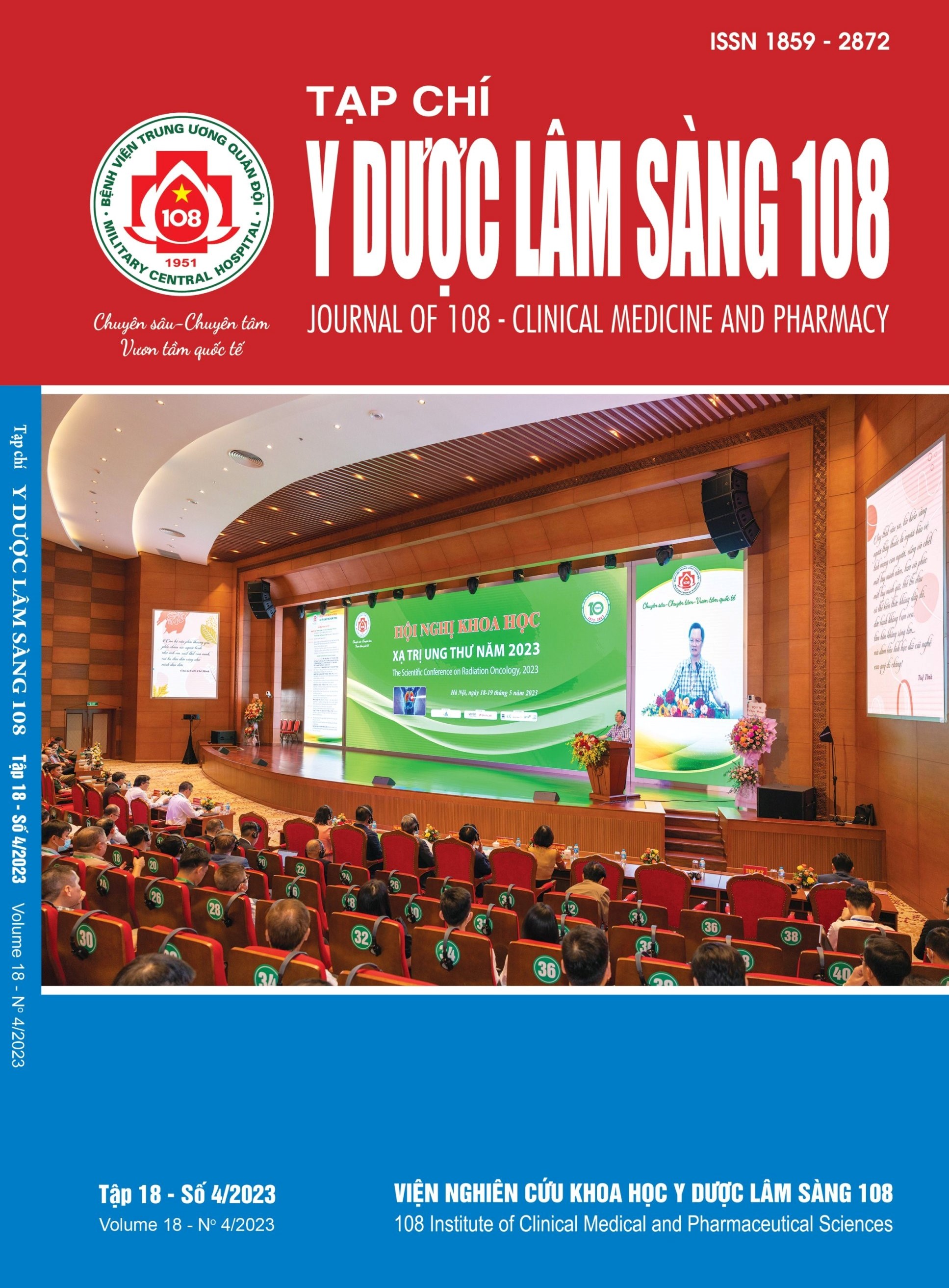Musculoskeletal disorders status of hemophilia patients in the North of Vietnam
Main Article Content
Keywords
Abstract
Objective: To describe the characteristics of musculoskeletal disorders of hemophilia patients by the Hemophilia Joint Health Score (HJHS) version 2.1. Subject and method: A cross-sectional descriptive study of hemophilia patients in 4 provinces/cities in North, Vietnam from December 2021 to April 2022. Result: A total of 82 patients were evaluated (mean age was 27 ± 11.97), including 61 hemophilia A and 21 hemophilia B. HJHS total score: 24 (9-45); The knee joint score of the left and right: 6 (1-10) and 5 (2-9). Musculoskeletal system disorders: Limited range of motion, muscle atrophy, loss of muscle strength,.. had been observed in the joints. Conclusion: Patients with hemophilia in the North have relatively high HJHS scores. The status of musculoskeletal disorders in patients with hemophilia occurs in most hinge joints. The function of the joints is limited, gait impairments, difficulty moving.
Article Details
References
2. Ngô Văn Tân, Lê Thị Duy Lệ, Nguyễn Thị Hồng Hoa (2015) Đặc điểm dịch tễ học, lâm sàng, cận lâm sàng của bệnh nhân hemophilia và Von Willebrand tại Bệnh viện Truyền máu Huyết học thành phố Hồ Chí Minh từ 4/2014 đến 10/2014. Y học thành phố Hồ Chí Minh, 19 (4), tr. 110.
3. Nguyễn Minh Tuấn, Lê Tường Giao, Nguyễn Thị Minh Tâm, Nguyễn Hoàng Mai Anh và cộng sự (2016) Điều trị tổn thương khớp ở bệnh nhân Hemophilia theo hướng chăm sóc toàn diện. Y học Thành phố Hồ Chí Minh 20(4), tr. 66.
4. Davari M, Gharibnaseri Z, Ravanbod R, Sadeghi A, (2019) Health status and quality of life in patients with severe hemophilia A: A cross-sectional survey. Hematol Rep 11(2): 7894.
5. Feldman BM, Funk SM, Bergstrom BM, Zourikian N et al (2011) Validation of a new pediatric joint scoring system from the International Hemophilia Prophylaxis Study Group: Validity of the hemophilia joint health score. Arthritis Care Res (Hoboken) 63(2): 223-230.
6. Fouasson-Chailloux A, Maugars Y, Trossaert M, (2021) Isokinetic knee strength deficit in patients with moderate haemophilia. 27(4): 634-640.
7. Lobet S, Meité N, Koninckx M I, Van Overstraeten A et al (2019) Implementation and assessment of a self- and community-based rehabilitation programme in patients with haemophilia from Côte d'Ivoire. 25(5): 859-866.
8. Ma L, Fan M, Xue F, Jiang WX (2019) Clinical Analysis of joint health status of patients with hemophilia treated on-demand. Zhongguo Shi Yan Xue Ye Xue Za Zhi 27(1): 185-191.
9. Serban M, Mihailov D, Arghirescu S, Poenaru DV et al (2017) A cross-sectional analysis of joint status and quality of life in children and adolescents with haemophilia in Romania. Hamostaseologie 37(1): 5-8.
10. St-Louis J, Abad A, Funk S, Tilak M, Classey S, Zourikian N, McLaughlin P, Lobet S, Hernandez G, Akins S, Wells AJ, Manco-Johnson M, John J, Austin S, Chowdhary P, Hermans C, Nugent D, Bakeer N, Mangles S, Hilliard P, Blanchette VS, Feldman BM (2022) The Hemophilia Joint Health Score version 2.1 Validation in Adult Patients Study: A multicenter international study. Res Pract Thromb Haemost 6(2):e12690. doi: 10.1002/rth2.12690. Erratum in: Res Pract Thromb Haemost 6(3): 12713.
11. Tat NM, Tat AM, Can F, Antmen B et al (2020) Muscle strength and joint health in children with hemophilia: A cross-sectional study. Turk J Pediatr 62(4): 606-613.
12. Zhao L, Yang H, Li Y, Wang Z et al (2022) Joint status and related risk factors in patients with severe hemophilia A: A single-center cross-sectional study. Hematology 27(1): 80-87.
 ISSN: 1859 - 2872
ISSN: 1859 - 2872
